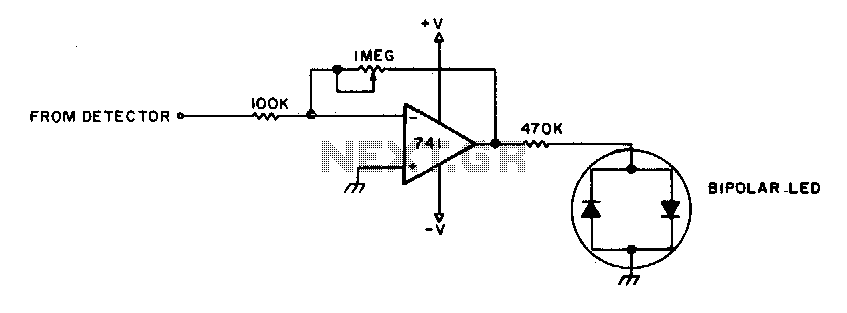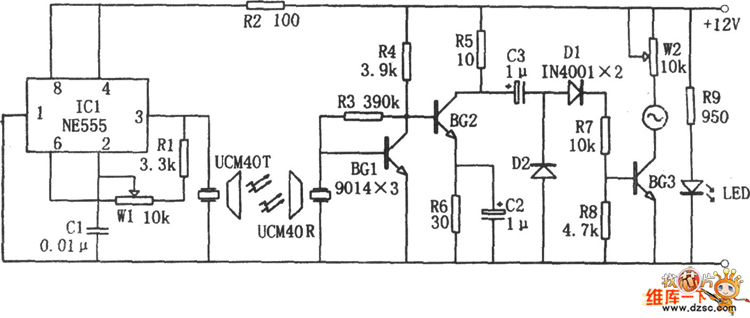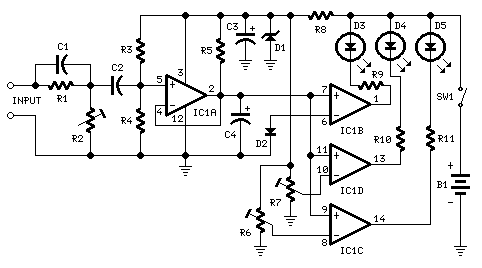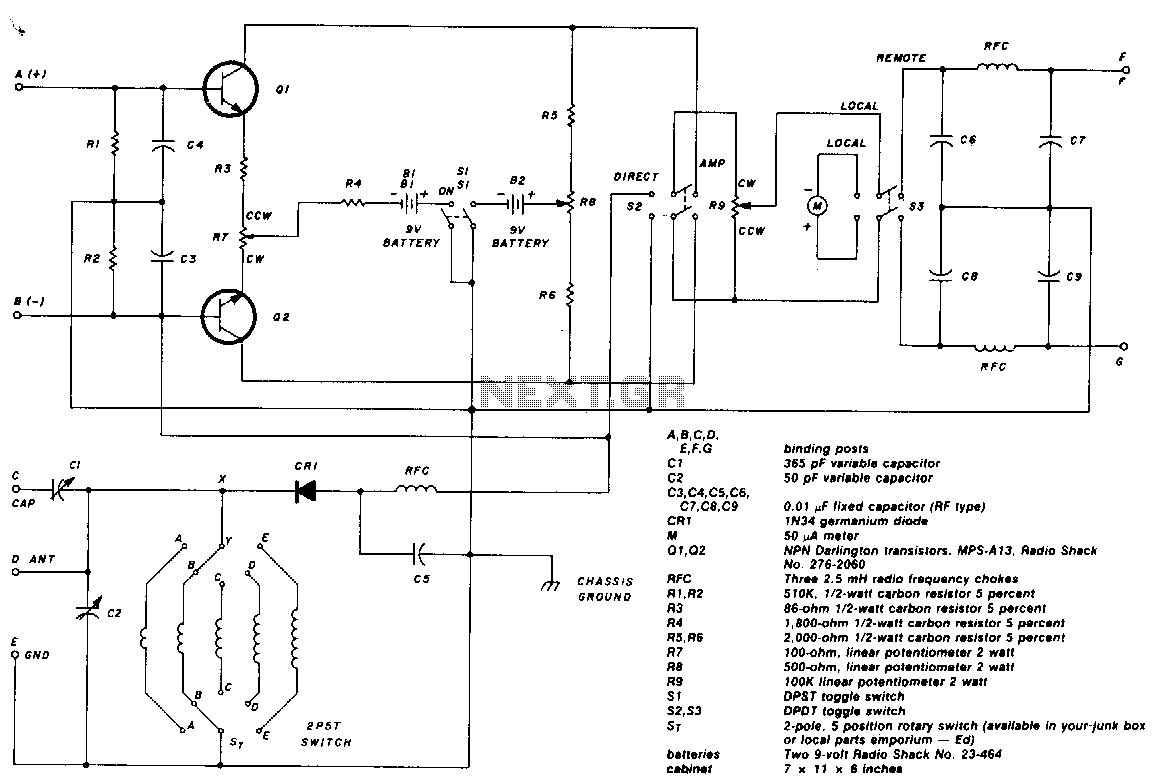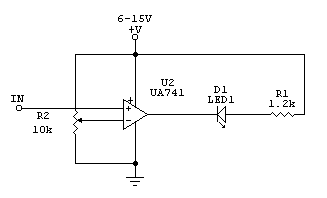
Adjustable-sensitivity field-strength indicator
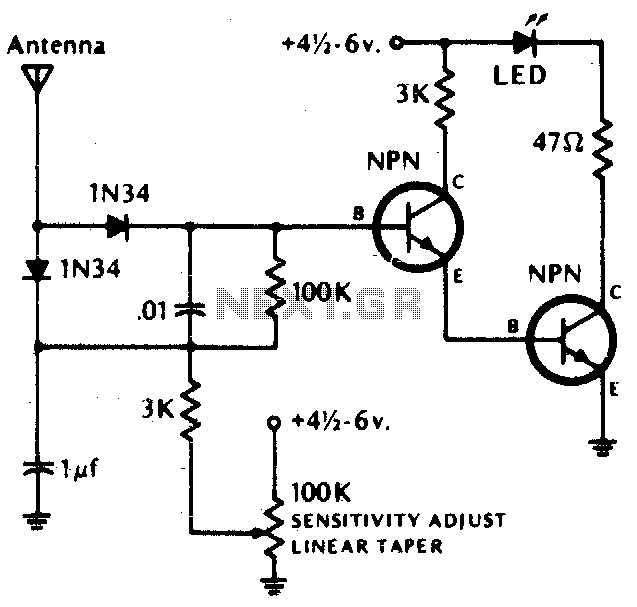
The LED illuminates when the RF field exceeds the pre-set field strength level. Germanium diodes are recommended. Additional information: Transistors (NPN) include 2N2222, 2N3393, 2N3904, or equivalent.
The circuit described is a simple RF field strength indicator that utilizes an LED to provide a visual indication of the RF field strength exceeding a predetermined threshold. The core component of this circuit is the LED, which activates when the RF field strength surpasses the set levels. The use of germanium diodes is suggested for their low forward voltage drop, which enhances the sensitivity of the circuit to low RF signals.
In this design, an RF field sensor is likely integrated with a voltage divider or a comparator circuit to detect the RF signal strength. The output from this sensor is fed into the base of an NPN transistor, such as the 2N2222, 2N3393, or 2N3904. These transistors act as switches, controlling the current flow to the LED based on the input signal from the RF sensor.
The choice of NPN transistors allows for efficient switching and amplification of the RF signal. When the RF field strength exceeds the set threshold, the transistor turns on, allowing current to flow through the LED, causing it to light up. A resistor may be included in series with the LED to limit the current and protect the LED from excessive current that could lead to damage.
Additional components may include capacitors for filtering and stabilizing the input signal, as well as potentiometers for adjusting the sensitivity of the circuit. This design is suitable for applications where monitoring RF fields is crucial, such as in wireless communication systems, RF testing environments, and electromagnetic compatibility assessments.The LED lights if the rf field is higher than the pre-set field strength level. Diodes should be germanium Transistors (NPN) = 2N2222, 2N3393, 2N3904 or equivalent. 🔗 External reference
The circuit described is a simple RF field strength indicator that utilizes an LED to provide a visual indication of the RF field strength exceeding a predetermined threshold. The core component of this circuit is the LED, which activates when the RF field strength surpasses the set levels. The use of germanium diodes is suggested for their low forward voltage drop, which enhances the sensitivity of the circuit to low RF signals.
In this design, an RF field sensor is likely integrated with a voltage divider or a comparator circuit to detect the RF signal strength. The output from this sensor is fed into the base of an NPN transistor, such as the 2N2222, 2N3393, or 2N3904. These transistors act as switches, controlling the current flow to the LED based on the input signal from the RF sensor.
The choice of NPN transistors allows for efficient switching and amplification of the RF signal. When the RF field strength exceeds the set threshold, the transistor turns on, allowing current to flow through the LED, causing it to light up. A resistor may be included in series with the LED to limit the current and protect the LED from excessive current that could lead to damage.
Additional components may include capacitors for filtering and stabilizing the input signal, as well as potentiometers for adjusting the sensitivity of the circuit. This design is suitable for applications where monitoring RF fields is crucial, such as in wireless communication systems, RF testing environments, and electromagnetic compatibility assessments.The LED lights if the rf field is higher than the pre-set field strength level. Diodes should be germanium Transistors (NPN) = 2N2222, 2N3393, 2N3904 or equivalent. 🔗 External reference

